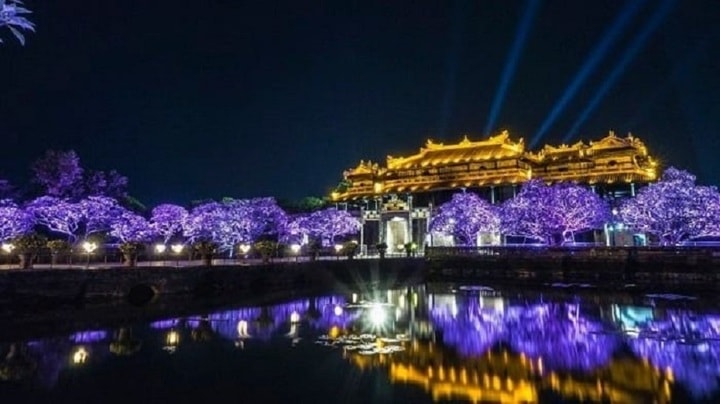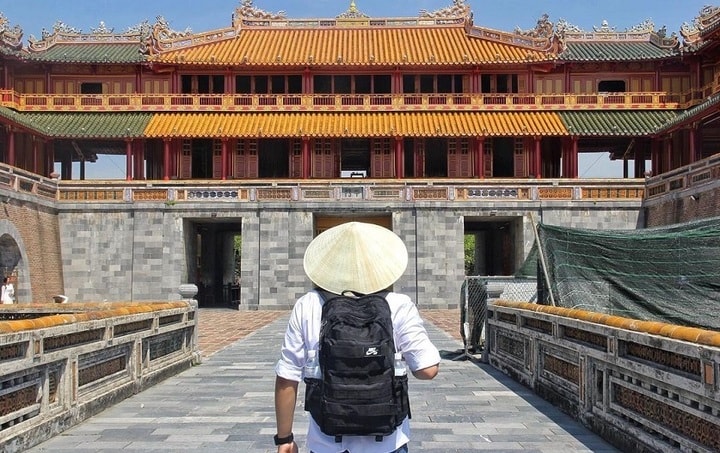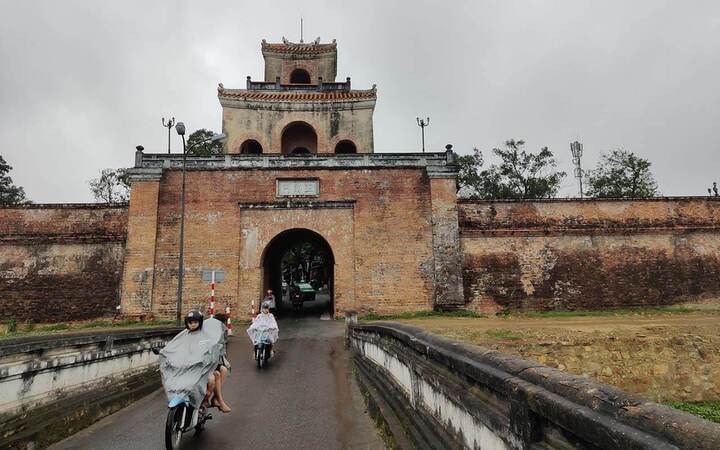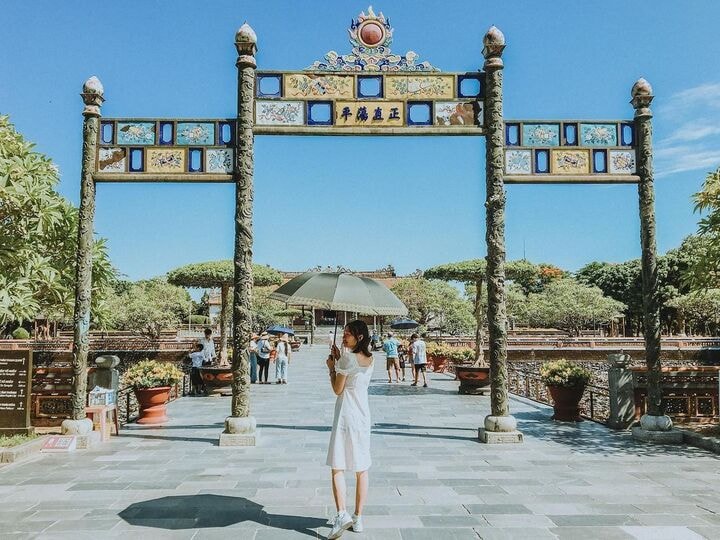Hue Citadel is the most important construction of the Nguyen Dynasty. Today, it is a famous tourist destination, attracting visitors.

When traveling to Hue, visitors not only admire the dreamy, ancient landscapes but also have the opportunity to learn about the history and architecture of Hue Citadel, a place of once-famous power.
Where is Hue Imperial City?
Hue Citadel is an ancient citadel, part of the Hue Monuments Complex recognized by UNESCO as a world cultural heritage. The relic is located right in the center of Hue city, on the banks of the poetic Huong River, built with a unique architectural style.
The area of Hue Citadel is 520ha. This was the capital of the Nguyen Dynasty for 143 years. After 2 centuries of destruction by time and war, Hue Citadel still retains its original appearance.
History of Hue Citadel
The construction of Hue Citadel began in the summer of 1805, under the reign of King Gia Long. Prior to that, from 1803, the planning of the citadel had taken place. The entire field survey process was undertaken by King Gia Long himself and the mandarins of the Nguyen Dynasty.
Compared to the ancient capital of Phu Xuan, the ancient Hue Citadel was much larger. During the construction period in 1805, the royal court had to mobilize about 30,000 people and soldiers to help block the river and dig trenches. Construction of 10 gates around the citadel began in 1809.

By 1818, the number of people mobilized to build the citadel had reached 80,000, focusing on building bricks on the four sides East - West - South - North. In 1831-1832, King Minh Mang ordered the construction of additional walls on the outside of the citadel, completing the architecture of the citadel.
Hue Imperial City Architecture
This place has a nearly square ground plan, the front is slightly curved like a bow because it has to follow the gentle curve of the Huong River flowing through.
The perimeter of the citadel is more than 10km wide, built in the style of Vauban - France's ramparts (military defense technique with 24 bastions protruding outward) combined with the architectural principles of the East.
With skillful application, suitable to the actual terrain, Hue Citadel became a unique military architectural work.

Hue Citadel has a total of 13 gates, of which 10 lead to the outside, 1 internal gate, and 2 waterway gates.
What is interesting about Hue Citadel?
- Ngo Mon: This is a structure built as the entrance gate of the Imperial Citadel, with the Ngu Phung Tower as the highlight.
Besides, Ngo Mon also has stone walls or roofs carved extremely delicately, bearing the cultural identity of the ancient capital.
Moreover, this is a space that brings an extremely airy and relaxing experience but is also equally overwhelming.
- Imperial Citadel: This is the place that marks more than 100 works with ancient architecture of Hue Citadel. This is the name for the second wall of Hue Citadel.
The Imperial Citadel was the main residence of the king and other members of the royal family. In addition, it was also the place to worship the ancestors of the Nguyen Dynasty kings.
- Thai Hoa Palace: Has a very unique architecture with beautiful and luxurious colors of the past, using red and yellow as the two main colors to highlight the nobility.
Outside Thai Hoa Palace there is also a garden with a fish pond and many rare trees that are carefully trimmed and cared for.

When visiting Hue Citadel, in addition to taking beautiful, poetic photos, you will also learn more about the culture and history of ancient kings as well as learn more about the royal customs of that time.
TB (summary)